Contents
- Common German Shepherd Health Problems
- 1. Addison’s Disease
- 2. Bloat
- 3. Degenerative Myelopathy
- 4. Hip and Elbow Dysplasia
- 5. Enlarged Heart
- 6. Exocrine Pancreatic Insufficiency
- 7. Hemangiosarcoma
- 8. Hemophilia A
- 9. Intervertebral Disk Disease
- 10. Mesothelioma
- 11. Mitochondrial Myopathy
- 12. Nuclear Sclerosis
- 13. Osteochondritis Dissecans
- 14. Panosteitis (Shifting Lameness)
- 15. Pannus
- 16. Dwarfism
- 17. Subaortic Stenosis (SAS)
- 18. Von Willebrand Disease
- German Shepherds Can be Prone to a Variety of Health Concerns
Knowing more about the common German Shepherd health issues is important for anyone who is thinking of getting one. Taking good care of your canine companion is important, and every breed has common ailments that owners need to know to look for. German Shepherd health issues are usually things that are quite common to large dog breeds, so if you have had another big dog, you will be familiar with some of these concerns.
As with any dog breed, you can avoid some of the common German Shepherd health problems in your dog by getting a puppy from a responsible and reputable breeder. Most of the common health issues in German Shepherds are things that breeders will make sure to provide certifications for. This is an important part of shopping for a healthy pet, and you should not compromise on this detail.
Common German Shepherd Health Problems
1. Addison’s Disease
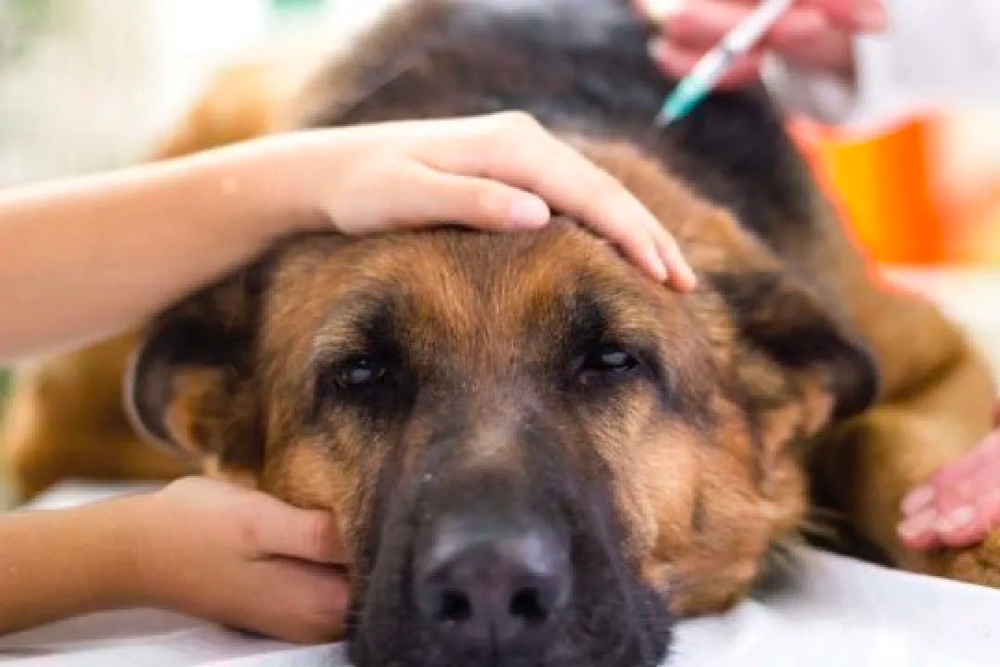
This condition is common in German Shepherds, and the exact cause is unknown. This condition is likely the result of an autoimmune disorder that causes adrenal issues. This condition can lead to progressive loss of health and well-being in your dog over time. It can be hard to diagnose this condition because the symptoms can often come and go.
The most common symptoms of this condition in dogs are depression, lethargy, weight loss, vomiting, diarrhea, blood in the stool, hair loss, increased urination, dehydration, shaking, and increased thirst. Some dogs will also struggle to keep their temperature regulated, and they might also have a weak pulse or an irregular heartbeat.
Treating Addison’s Disease often requires a combination of the use of steroids to reduce inflammation in the body and changes to diet and exercise for your dog. The mainstay of treatment for this condition is helping to keep your dog’s hormones in balance.
Read more detail: Addison’s Disease in German Shepherds: Symptoms and Treatment
2. Bloat
Bloat is a condition that happens when a dog’s stomach fills with gas and food, as well as fluid. This can lead to the stomach twisting out of place. This causes a lot of pain, and it can even lead to death in dogs that do not get treatment. It is most common in dogs that have large, deep chests, which means that German Shepherds are particularly at risk.
Bloat requires surgery to fix. Your dog will probably never bloat again after their surgery, however. This is because the surgery includes a process that attaches the stomach to the inside of the body to prevent this from happening again.
This condition can be hard to prevent in most cases, but you should avoid taking your dog to exercise right after a meal. You should also be sure not to feed your dog large meals once a day to help avoid bloat.
Read more detail: Gastric Dilatation Volvulus – Bloat in German Shepherd Dogs
3. Degenerative Myelopathy
Degenerative myelopathy is a degenerative condition that is a disease of the spinal cord in dogs. There is no treatment for the disease, and it will eventually lead to the complete paralysis of the dog who has been diagnosed. The outer layer of the tissue in the spinal cord breaks down in this disease, and coordination and balance can be impacted. Dogs usually also often struggle with neuropathy as well.
Most dogs are 8 to 9 years of age when the first symptoms of degenerative myelopathy make themselves known. While your dog will not be in pain due to this condition, it can be frightening to some dogs as they lose balance and coordination. The reality of this disease is that you will only be able to help your dog to adjust its lifestyle to deal with the loss of function that is part of this disease.
This condition can move quickly, or it might take years to significantly impact your dog’s well-being. Your vet will need to help you to provide support for your dog related to this condition throughout all of the stages of the disease.
Read more detail: Degenerative Myelopathy in German Shepherds: Symptoms, Causes and Treatment
4. Hip and Elbow Dysplasia
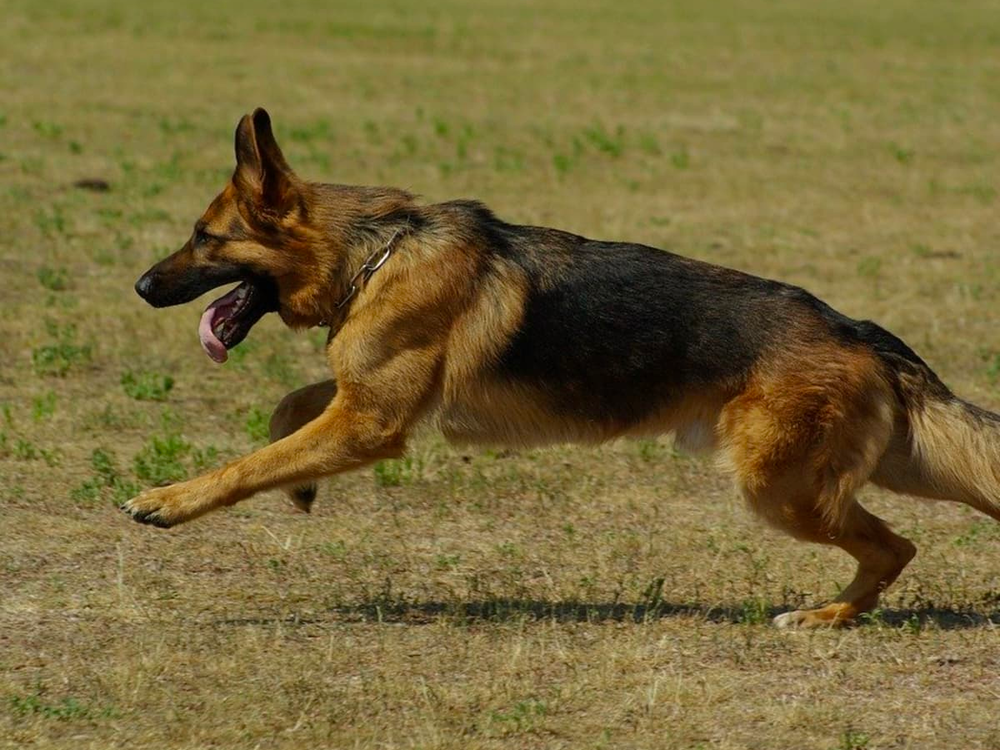
Hip and elbow dysplasia is common in German Shepherds. It is so common that most breeders will usually certify their animals as being free from the risk of developing this disorder. This condition is caused by a poor fit of the bones inside the elbow or the hip joint. This leads to issues where the joint can easily be displaced, causing injury, pain, and progressive damage to the joint.
Animals with these issues can end up with arthritis really early in life. They can also suffer from significant soft tissue damage. Many of these dogs will not experience as long of a lifespan as a healthy dog, even with surgical revisions and support to help stabilize the impacted joints.
Dogs that have hip or elbow dysplasia should avoid excessive exercise and exertion, and they should not jump onto tall surfaces all the time. You will need to limit your dog’s exercise to things that are low-impact and do not run the risk of tearing the soft tissue around the joints.
Read more detail:
5. Enlarged Heart
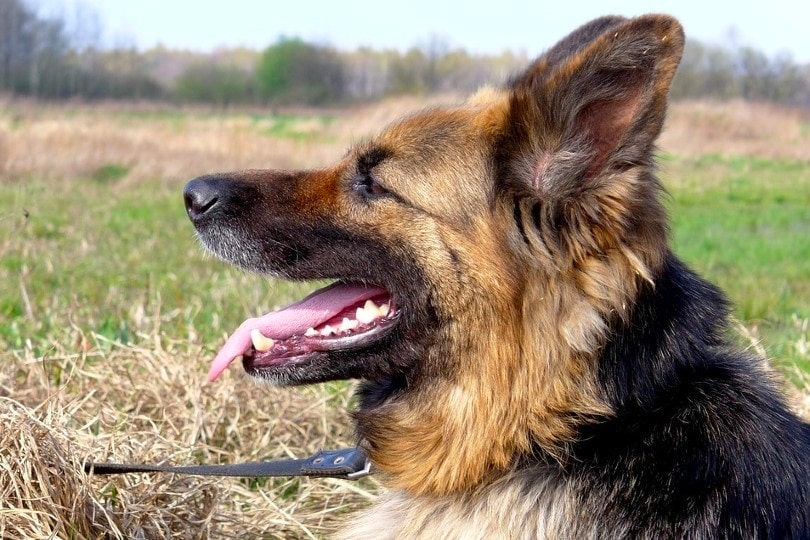
An enlarged heart can be quite common in big dogs. An enlarged heart is not as efficient at pumping blood throughout the body. This means that blood can accumulate in the heart, and dogs with this condition can have a hard time breathing, especially when exerting. Dogs with this condition can be prone to heat exhaustion as well.
This condition is progressive, and the only treatment is to manage some of the secondary symptoms that this condition causes. There are medications that help support the circulation of blood and other drugs which can help your dog’s lungs to stay clear of fluid. Dogs with this condition will need to exercise carefully, and they will need to be fed correctly so that they do not become overweight. This is another condition that requires the help of a vet to manage effectively.
Read more detail: Enlarged Heart in German Shepherds: Signs and Treatment
6. Exocrine Pancreatic Insufficiency
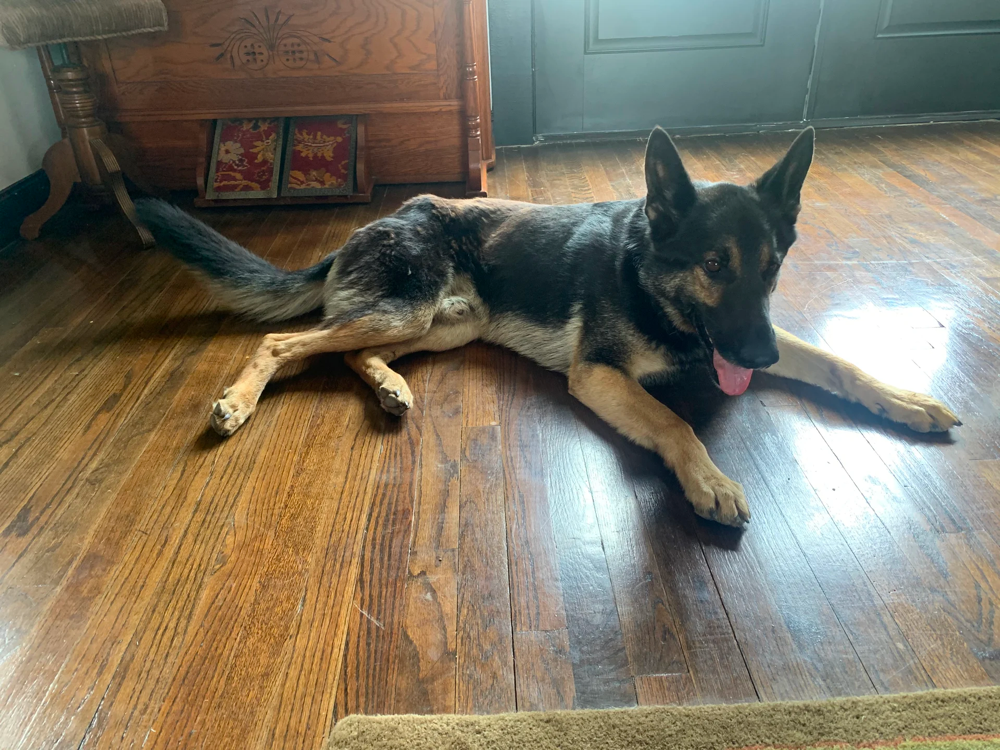
Exocrine Pancreatic Insufficiency is caused by an inability to produce enough pancreatic enzymes to digest fats, carbohydrates, and proteins. This leads to poor absorption of nutrients and problems with appetite and energy levels in your pet. Dogs with this condition often produce lots of pale, fatty feces. This is because there is undigested fat in the stool. This is one of the first signs of this condition in most dogs.
This condition is an inherited one, and it is more common in some breeds of dogs than others. Young dogs are more commonly affected than older animals, and severe weight loss, vomiting, and excessive appetite are quite common in this condition.
Pancreatic enzymes can be given to animals who suffer from this disease, and there are other medications that can be given to help treat secondary problems like weight gain, trouble with fluid retention in the body, and pain.
7. Hemangiosarcoma
Hemangiosarcoma is caused by the formation of a malignant tumor that develops in the lining of the blood vessels. This is common cancer in many dog breeds, and the prognosis is not great for dogs that have been diagnosed with this condition. This cancer moves very rapidly, and most dogs have between 2 weeks and three months to live after they are diagnosed.
This cancer is not one that typically responds well to cancer treatment. Dogs with this cancer are mostly offered supportive care to keep them comfortable and happy as they enjoy the time that they have left. This can be very hard for owners to accept, and it can be possible to take more active steps to try and slow cancer, but the outcome is usually no different than if you choose not to do chemotherapy.
8. Hemophilia A
This condition is caused by a hereditary disorder that leads to a lack of blood clotting factors. The factor that is missing is blood clotting factor VIII. This means that dogs that have this condition have trouble bleeding excessively if they get a wound. These dogs are prone to serious and life-threatening complications related to surgery, accidental wounds, or internal bleeding.
Hemophilia can be really hard to treat, and it can be hard to prevent bleeding when your dog suffers even small wounds. Your vet will likely have to give your dog plasma transfusions when they have been injured, and your dog will be unlikely to be a good surgical candidate. There is no cure for this condition, so management of your dog’s behavior to try and reduce the risk of injury is often the best way to manage this condition.
Read more detail: Hemophilia A in German Shepherds: Causes and Treatment
9. Intervertebral Disk Disease
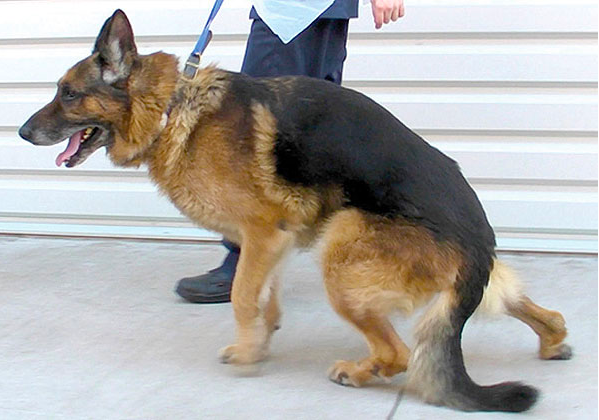
IVDD is a ruptured, slipped, bulging, or herniated disc in your dog’s back. This condition is more common in some breeds, but it can happen to any dog. This condition is often related to a gradual, degenerative process that happens over time. The discs in your dog’s back can slowly degenerate over time and become unable to absorb shock. The spine also becomes less flexible over time, leading to a further progression of the condition.
Intervertebral Disk Disease includes symptoms like an inability to walk normally, holding the head quite low when moving around, arching the back, being reluctant to move, and inability to stand. This condition can be treated with pain medication and medications that are used to treat inflammation. Dogs will need to move around each day but should not jump around or engage in running or jumping. If your dog has become incontinent due to this condition, you might need to treat it with incontinence medications or use doggy diapers.
This condition is not surgical in most cases in dogs, so management of the symptoms is the best course of action. Some dogs benefit from things like massage, chiropractic treatments, and acupuncture as well.
Read more detail: Intervertebral Disk Disease in German Shepherds: Signs and Treatment
10. Mesothelioma
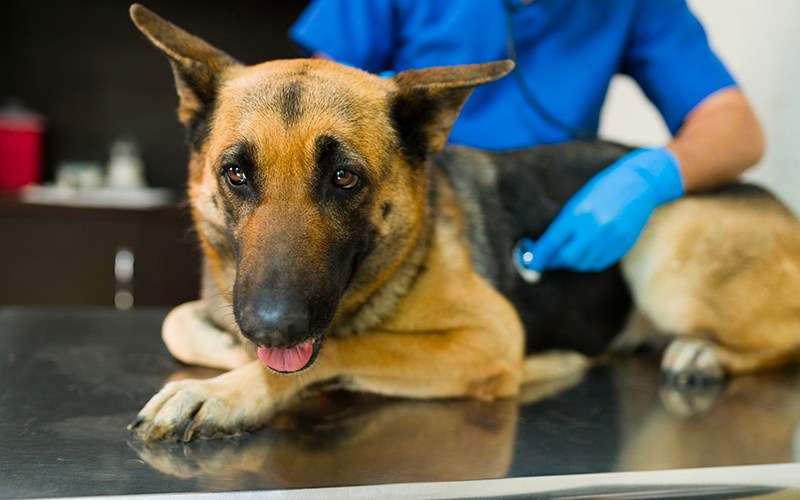
This is cancer that is rarely seen in dogs. This cancer shows up in the cavities of your dog’s body. This might mean tumors in the abdomen, the pericardium, or even in the scrotum in male dogs. This cancer is poorly understood at this time.
Dogs with this condition might cough, show respiratory distress, have blood in their urine, be lethargic, have trouble moving, vomit or have diarrhea or suffer from heart disease and an enlarged abdomen and scrotum. There are other symptoms that might show up as the condition advances.
This condition can be treated with chemotherapy, and your vet might need to drain fluid out of your dog’s abdomen from time to time. Medications for pain and other symptoms associated with the condition can also be given. As in most cancers that dogs can get, a lot of the focus of the treatment process is on keeping your dog comfortable for as long as possible.
Read more detail: Mesothelioma Cancer in German Shepherds: Symptoms and Treatment
11. Mitochondrial Myopathy
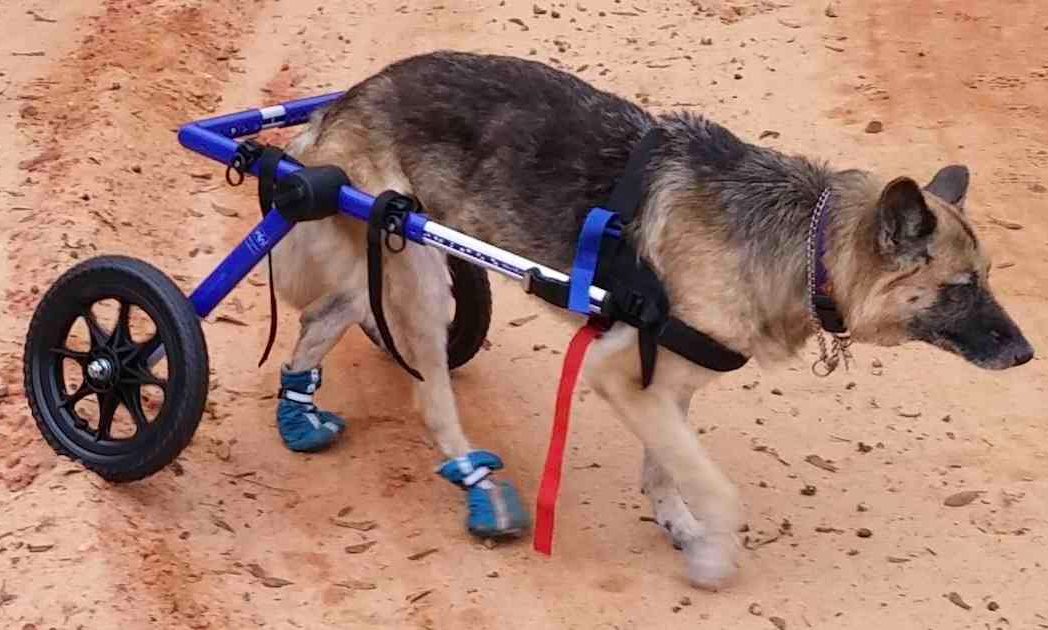
Mitochondrial Myopathy is a metabolic disorder in dogs that is quite rare. This condition causes issues with the mitochondrial and nuclear DNA in a dog’s body. This condition causes symptoms like ataxia, lack of muscle coordination, slow reflexes, and general weakness in the body. This condition often begins in puppyhood, but it can show up later in life as well. Muscle mass will appear normal in dogs with this condition, but they will struggle with balance and coordination due to the condition.
This condition does not seem to be painful, so much of the treatment is focused on helping dogs with the disorder to overcome the loss of balance and coordination that is related to the disease. This might mean that your dog will need physical therapy, acupuncture, massage, or water treadmill treatments. These supportive care treatments can help your dog feel better, but they will only slow the progression of the disease. This condition cannot be cured.
Read more detail: Mitochondrial Myopathy in German Shepherds: Symptoms, Causes, and Treatments
12. Nuclear Sclerosis
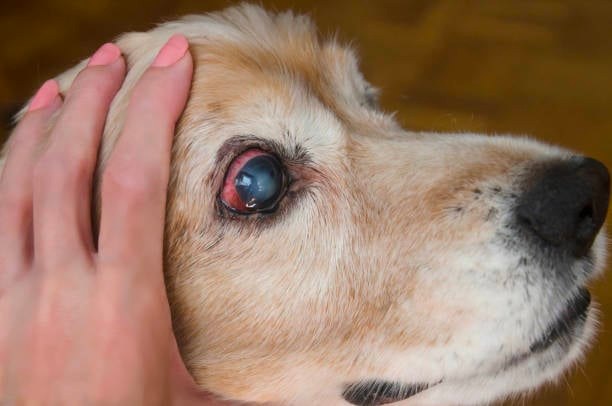
Nuclear Sclerosis often shows up in dogs that are 6 to 7 years of age. The lens of the eyes becomes cloudy slowly over time, eventually causing blindness. This happens because the inner layers of the lens become compressed and denser. This condition is often mistaken for cataracts, but it is actually not the same condition.
The condition cannot be treated, but it does not cause secondary issues other than worsening vision over time. This is a common condition in geriatric dogs, but German Shepherds can display it much earlier than other breeds. Owners will need to limit where dogs with this condition can roam to help prevent them from running into things or damaging their eyes. Baby gates can be very helpful, and keeping food and keeping the arrangement of the home the same can help old dogs to stay out of trouble as they start to lose their sight.
Read more detail: Nuclear Sclerosis in German Shepherds: Symptoms, Causes, and Treatments
13. Osteochondritis Dissecans
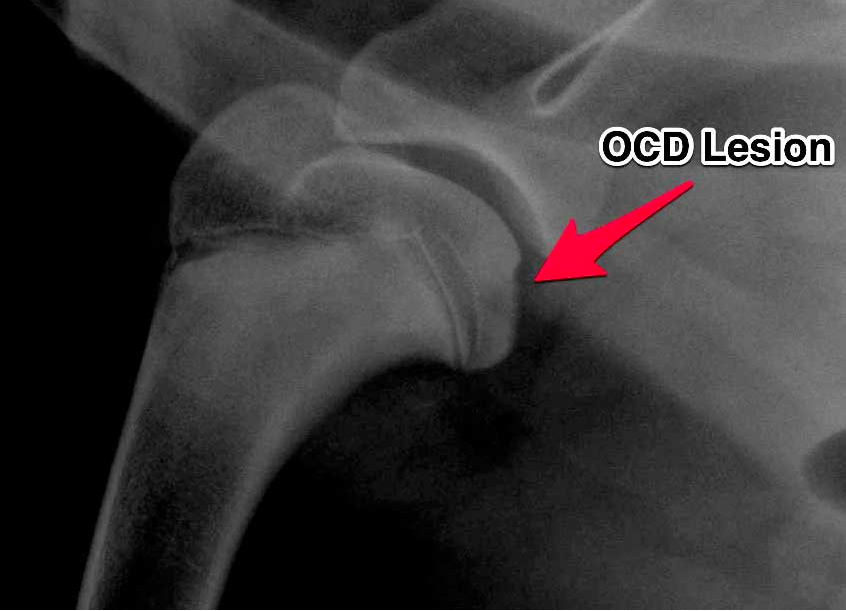
OCD is an inflammatory condition that is often painful and which can cause long-term damage to the bones in the body. OCD causes diseased cartilage to separate from the underlying bone. This is most common in the shoulder, hip, knee, and stifle joints in dogs.
Dogs with this condition will limp or appear lame, and they might cry out when the affected limb is flexed or bent. The joint might also be swollen and warm to the touch. Some dogs have mild and intermittent lameness, while others will suffer from prolonged and painful episodes of discomfort and be unable to bear weight on the affected leg.
Small OCD lesions can usually be healed with NSAIDs and a period of rest. Larger lesions often require surgery to be corrected. The damaged cartilage is removed in this kind of surgery, and the dog must rest for a period of weeks until the bone has had time to heal completely.
Read more detail: Osteochondritis Dissecans (OCD) in German Shepherds
14. Panosteitis (Shifting Lameness)
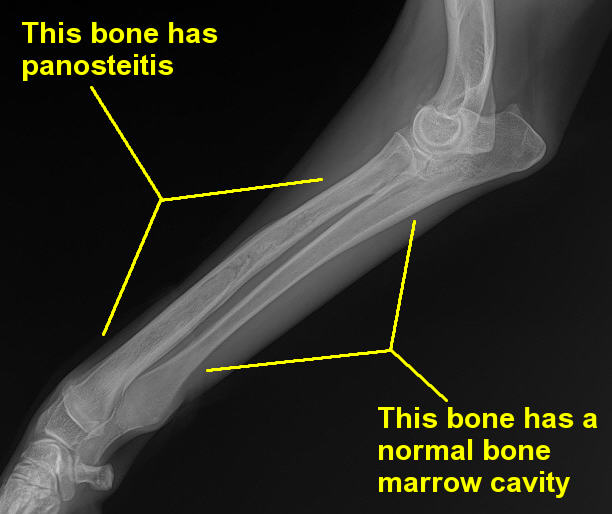
Shifting Lameness is a painful condition that is caused by inflammation in the outer surface of the shaft of one or more of the long bones in the legs. This is a lot like growing pains, and it can occur in more than one set of bones or shift around over a period of time. Dogs with this condition will be lame and might chew at their legs or cry out when they try to run or walk around.
This condition happens in young dogs that are growing very rapidly. The condition can repeatedly occur until a dog reaches the age of two. Males are more often affected than females, but either sex of dog can suffer from Shifting Lameness. This condition will resolve at two years of age, however, which means that treatment is largely supportive.
Your vet might give your dog pain medications to help manage discomfort and control inflammation in the affected limb. Puppies with this condition should exercise lightly if they can tolerate moving around. On days when they are too painful to move around, resting is recommended. Some dogs will lose their appetite due to being in pain, but it should return once they are on supportive medications.
Read more detail: Panosteitis (Pano) or Long Bone Disease in German Shepherds
15. Pannus
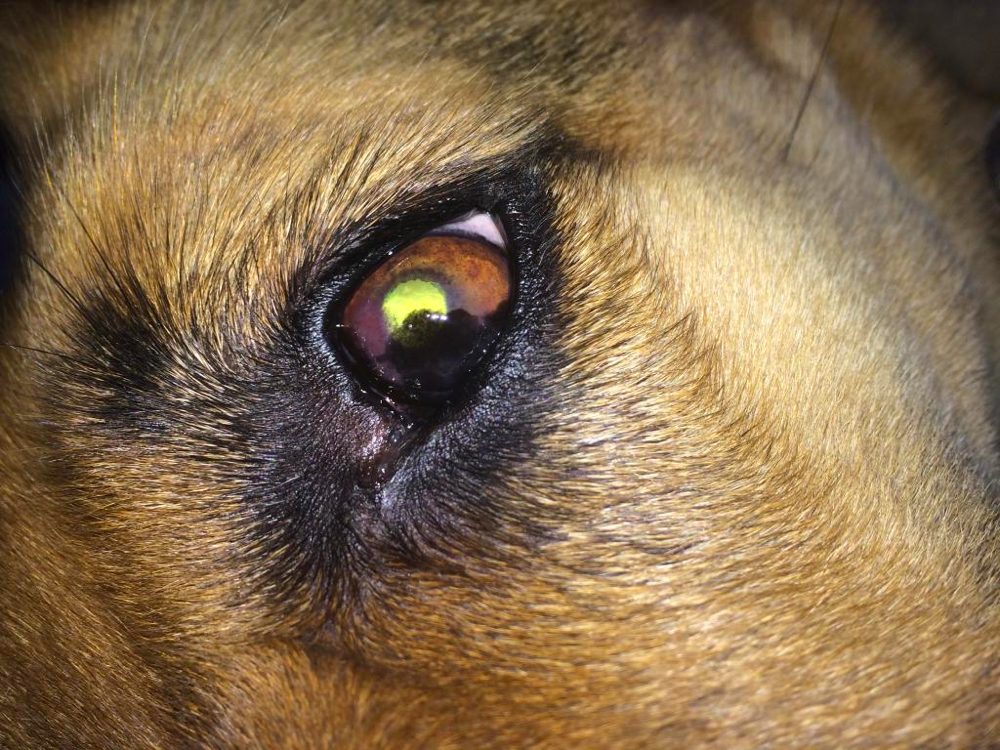
Pannus is an immune-mediated condition that impacts the cornea or the clear part of the eye. This condition is most common in middle-aged dogs. The first sign of this condition is usually a non-painful mass that appears on the cornea. This lesion will usually be located on the outer edge of the eye. The third eyelid might also appear inflamed or red.
As the condition worsens, the lesion will spread and flatten and become darker and more inflamed. This lesion will essentially cause scarring across the surface of the eye. If not treated, a dog with this condition will become blind.
Corticosteroids are the primary intervention for this condition, and antibiotics might also sometimes be given if a secondary infection is present. Dogs with this condition might need to wear sunglasses outside while their eyes are healing. Treatment will not completely remove the ulcer from the eye, but it can halt the progression of the damage in most cases. Treatment of this condition is a lifelong commitment, as there is no other way to stop the lesion from spreading.
Read more detail: Keratitis or Pannus in German Shepherds: Symptoms, Causes, and Treatments
16. Dwarfism

Dwarfism in dogs is caused by a congenital hormone deficiency. This causes affected dogs to grow more slowly than normal because their bodies are not being supplied with the right growth hormones. Dogs with Dwarfism often have a much shorter statute, display hair loss might have decreased appetite and energy, and might struggle with uneven heat cycles as well as sterility.
Dwarfism is actually quite common in German Shepherds that are not bred responsibly. This condition should be carefully avoided by all breeders of German Shepherds, and breeders should be willing to certify their dogs as being free of this trait.
Dogs with Dwarfism are more likely to have other serious health complications due to their Dwarfism. This is a condition that can have a lasting impact on your dog’s overall well-being. If you decide to get a dog that you know has Dwarfism, you will need to be prepared to offer long-term supportive care to your pet related to this condition.
Read more detail: Pituitary Dwarfism in German Shepherd Dogs
17. Subaortic Stenosis (SAS)
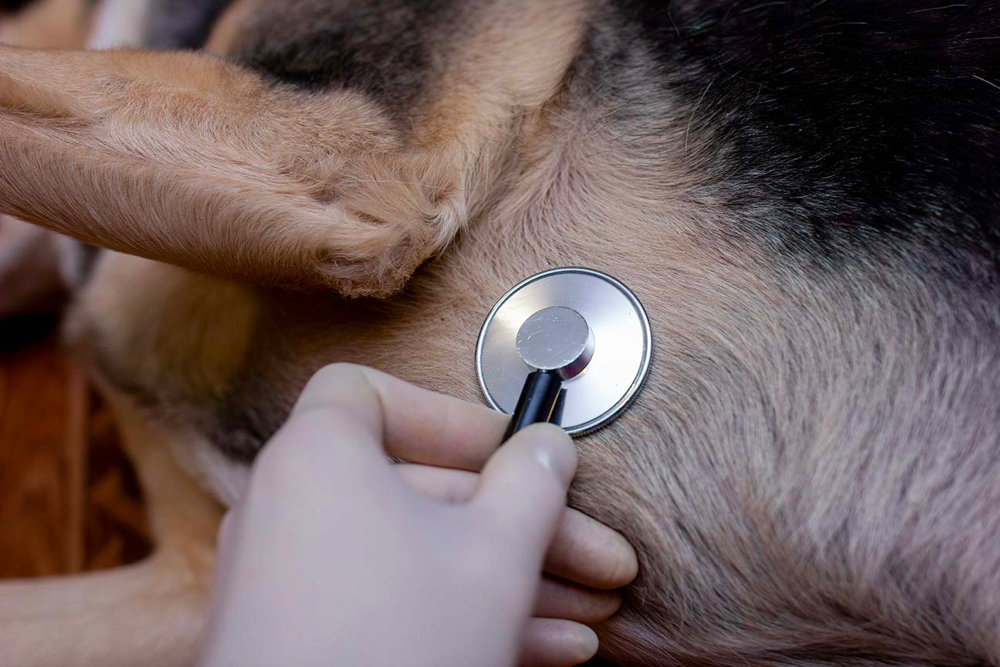
This is a condition that is caused by a congenital heart defect in some dog breeds. In this condition, the left ventricle is obstructed, which causes overload on the left ventricle. Dogs with this condition are prone to fainting, and they can have a shortened lifespan as well. Since this condition is congenital, responsible breeders will certify their dogs as being free from this defect.
Dogs that have been diagnosed with this condition might be treated with beta-blockers, and owners will be directed to make sure that their dogs are not too active and that they do not exert in the heat. Surgical interventions do not usually provide relief for the problem and are not usually recommended by vets.
Read more detail: Subaortic Stenosis – SAS in German Shepherds: Symptoms and Treatment
18. Von Willebrand Disease
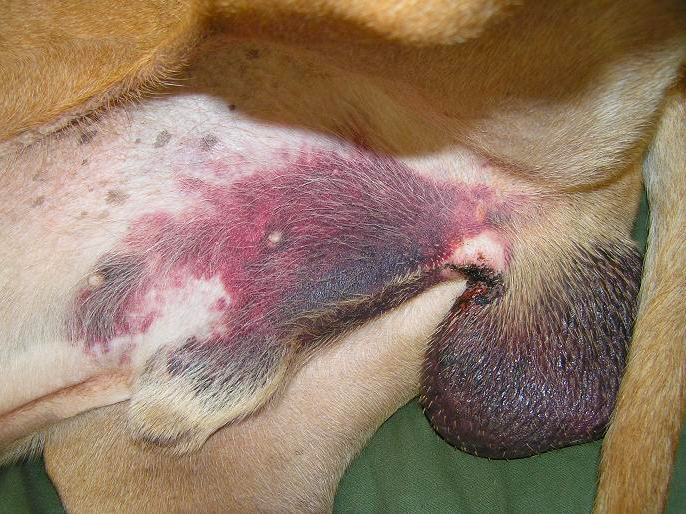
Von Willebrand disease is an inherited condition that causes issues with blood clotting. Dogs with this condition are prone to bruising, bleeding from the gums and nose, or bleeding during surgery. There is no cure for this condition, but dogs that have been diagnosed with it can live full, happy lives.
This health concern is caused by a missing protein in the blood that aids in clot formation. In some dogs, this protein will be completely absent, while in others, it is just produced at a much lower rate, which is ideal. Dogs with this condition can still have surgery and can engage in normal activities, but there should be precautions taken to help them to clot more effectively if they are injured. Applying pressure to the wound if the dog gets cut is key, and preparation might be needed to make surgery less risky as well.
Read more detail: Von Willebrands Disease in German Shepherds: Symptoms, Causes, and Treatments
German Shepherds Can be Prone to a Variety of Health Concerns
All breeds of dogs can be impacted by specific health conditions that are common to their breed. Most of these conditions can be avoided if you get your dog from a responsible breeder. Some of the other items on this list are things that can happen as a dog ages. Being aware of the common health issues that can impact your German Shepherd will help you to take the best possible care of your dog throughout its life with you.
Please Note: This information regarding dog diseases and treatments on this website has not been created to be used in place of the advice of a vet. We do not receive any financial benefit from the advice on this page and are not offering advice to be used in place of professional examination by a veterinarian. Treatment of diseases depends on many factors like age, gender, degree of severity, other health conditions that the dog may have, body weight, and so forth. All treatment MUST be done under the strict supervision of a registered veterinarian practitioner.

 German Shepherd Vs. Australian Shepherd: A Complete Comparison
German Shepherd Vs. Australian Shepherd: A Complete Comparison